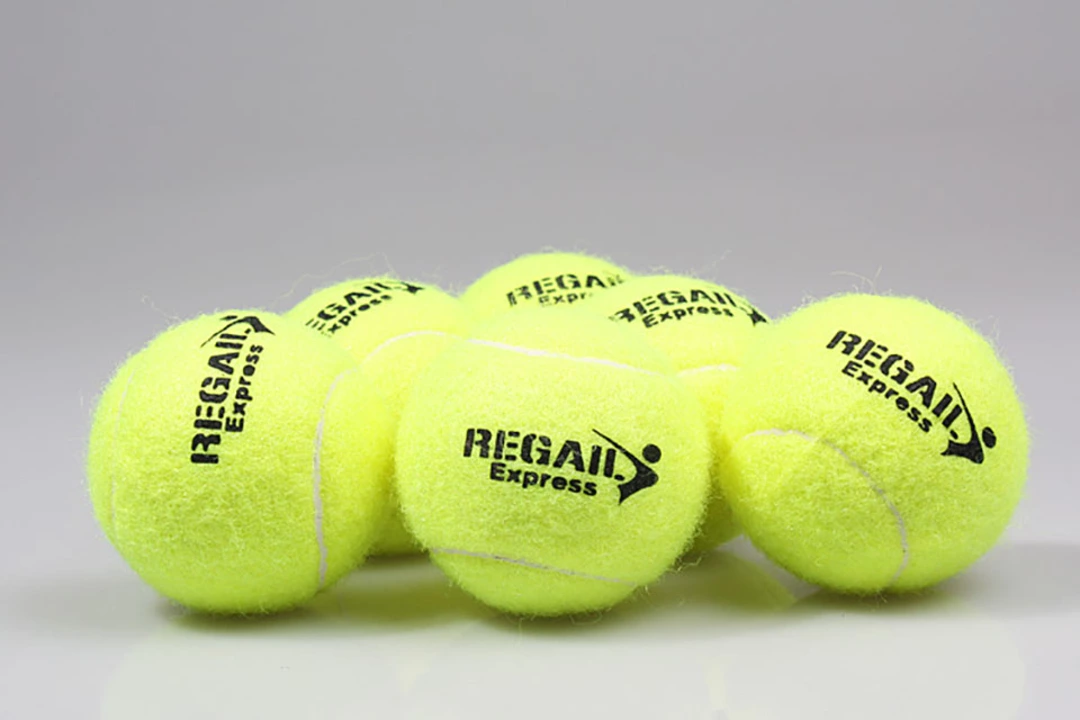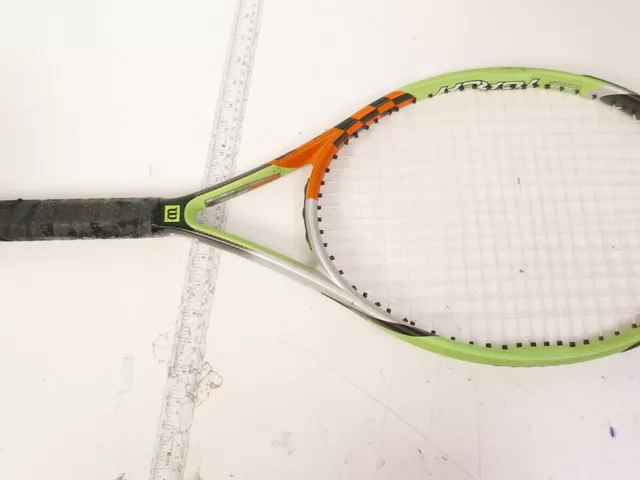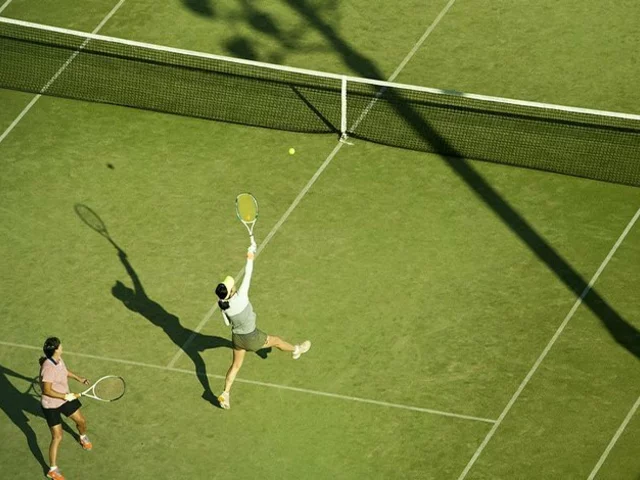
Why does a tennis ball bounce high if we hit it up?
Unraveling the Science Behind the High Bounce of a Tennis Ball
Have you ever stopped to wonder why a tennis ball bounces so high when you hit it up? It's a curious phenomenon that no one has been able to explain away, until now. After a bit of scientific exploration, we can get to the bottom of why a tennis ball has such a high bounce.
The Physics of a Tennis Ball
At the heart of understanding why a tennis ball bounces so high, we have to take a look at the physics of a tennis ball. A tennis ball is composed of a rubber core that is covered by a woven felt cloth. The rubber core is filled with air, and this is what gives the tennis ball its bounciness. The air in the core of the ball is what allows it to compress when it hits the ground, and then expand back to its original shape, allowing it to bounce.
The Elasticity of a Tennis Ball
The elasticity of a tennis ball is also a factor in why it bounces so high. The elasticity of a tennis ball is measured by its coefficient of restitution, which is a measure of the energy a ball has when it is hit. The higher the coefficient of restitution, the more energy the ball will have when it is hit, and the higher it will bounce.
The Impact of Gravity on a Tennis Ball
The impact of gravity on a tennis ball is also a factor in why it bounces so high. When a tennis ball is hit, it will fall toward the ground due to gravity. This downward force will cause the ball to compress when it hits the ground, and then rebound back up due to the force of gravity. This rebound effect is what causes the tennis ball to bounce so high.
The Effect of Spin on a Tennis Ball
The effect of spin on a tennis ball is also important in understanding why it bounces so high. When a tennis ball is hit with spin, the ball will spin on its axis and this will cause the ball to move in a different trajectory. The spin will cause the ball to move in a circular motion, and this will cause the ball to bounce higher than a ball without spin.
Conclusion
By understanding the physics, elasticity, gravity, and spin of a tennis ball, we can now explain why a tennis ball bounces so high when we hit it up. The combination of these forces gives the tennis ball the ability to compress and rebound, giving it an impressive level of bounce.
Exploring the Physics of a Tennis Ball's High Bounce
When we hit a tennis ball, why does it bounce so high? It's a fascinating phenomenon, and it has everything to do with the physics of the ball. A tennis ball is made up of several different elements that work together to create a powerful bounce.
Pressure and Elasticity
The pressure inside the ball plays an important role in how high it bounces. When the ball is compressed, the air inside is forced outward and the ball becomes more elastic. This elasticity helps the ball to bounce back up after it hits the ground. The harder the ball is hit, the greater the pressure inside, and the higher it will bounce.
Surface and Spin
The surface of the ball also affects its bounce. A smoother surface will cause it to bounce higher than a rougher surface. Additionally, the spin of the ball can influence how high it bounces. If we hit the ball with a spin, the ball will rotate in the air and the smooth surface will help it to rebound quickly, resulting in a higher bounce.
Weight and Size
The weight and size of the ball are also important factors. Heavier balls will usually bounce lower than lighter balls, and larger balls will usually bounce higher than smaller balls. This is because the mass of the ball plays a part in the amount of energy it absorbs when it hits the ground.
Gravity and Air Resistance
When a tennis ball is in the air, it is affected by both gravity and air resistance. Gravity pulls the ball down, while air resistance pushes the ball up. The higher the ball is hit, the more time it has to be affected by gravity and the less time it has to be affected by air resistance. This helps to explain why a higher hit ball will usually bounce higher.
Conclusion
In conclusion, a tennis ball’s high bounce is due to a combination of factors, including pressure, elasticity, surface, spin, weight, size, gravity and air resistance. All these elements work together to create a powerful bounce when the ball is hit. By understanding the physics behind the bounce, we can gain a better appreciation for the sport of tennis.
The Physics of a Tennis Ball's Bounce: Investigating the Factors at Play
When a tennis ball is hit into the air, it quickly returns to the ground. But why does the ball bounce so high? Investigating the physics behind a tennis ball's bounce can help to explain why it behaves the way it does.
When a ball is struck, the force of the impact causes its molecules to compress, creating a small but significant amount of energy. This energy is then released in the form of a rebound, sending the ball back in the opposite direction. The rebound is further enhanced by the ball's elasticity, or its ability to stretch and flex in response to the force of the impact.
The height of a tennis ball's bounce is also affected by the surface it strikes. If the surface is hard and smooth, the ball will rebound with more force than if it hits a soft or uneven surface. This is because the harder surface does not absorb as much of the energy from the impact, allowing the ball to rebound with greater force.
The speed and angle of the strike also have an impact on the ball's bounce. A fast, flat strike will cause the ball to rebound with a lower angle and less force, while a slower, angled strike will send the ball back with a higher angle and more force. The spin on the ball is also a factor, as it can affect the angle of the rebound.
Finally, the air pressure surrounding the ball also plays a role in its bounce. The higher the air pressure, the more energy is retained in the ball, resulting in a higher rebound. Conversely, lower air pressure will result in a lower rebound.
By understanding the various factors that affect a tennis ball's bounce, players can use this knowledge to their advantage. For instance, a player can adjust their strike angle and spin in order to hit the ball with greater force and achieve a higher bounce. Furthermore, players can also adjust their court surface and air pressure to further enhance their ball's bounce.
Investigating the Reasons Why a Tennis Ball Bounces Higher When Hit Upwards
When a tennis ball is hit upwards, why does it have a tendency to bounce higher than when it is hit in a downwards direction? This is a question that has puzzled and intrigued many avid tennis players. By understanding the science behind the phenomenon of the bouncing tennis ball, we can better comprehend why it behaves the way it does. In this article, we will explore the various factors that influence how a tennis ball reacts differently when hit up versus down.
The Physics of Bouncing Tennis Balls
The physics behind the bouncing of a tennis ball involve several key concepts. First, the ball is traveling at a certain velocity when it is hit, and this velocity affects how it bounces. Second, the ball’s surface area and its weight also play a role. Third, the type of surface on which the ball is hit can influence how it bounces. Fourth, the angle at which the ball is hit can also have an effect. All of these factors must be taken into account when analyzing why a tennis ball bounces higher when hit up.
How Angle of Impact Affects Bounce Height
When a tennis ball is hit up, the angle of impact has a direct effect on the rate at which it bounces. The more upward the angle is, the higher the ball will bounce. This is because the ball is able to gain more lift and momentum when it is hit up, compared to when it is hit down. As a result, the ball will travel higher and faster, allowing it to bounce higher than when it is hit down.
Surface Area and Weight
The surface area and weight of a tennis ball also influence how high it will bounce when hit up. As the surface area increases, the ball will be able to gain more lift and momentum, resulting in a higher bounce. Similarly, the weight of the ball will affect its bounce height. A heavier ball will be able to gain more momentum and lift, resulting in a higher bounce.
Conclusion
From the physics of bouncing tennis balls to the angle of impact and surface area and weight of the ball, there are several factors that contribute to why a tennis ball bounces higher when hit up. By taking all of these factors into account, we can better understand why this phenomenon occurs. Ultimately, the physics behind the bouncing of a tennis ball provide us with a better understanding of why it reacts differently when hit up versus down.





Written by Griffin Callahan
Hi, I'm Griffin Callahan, a sports enthusiast with a particular expertise in tennis. I've dedicated years to studying the game, both as a player and an analyst. My passion for tennis has led me to write extensively about the sport, covering everything from player profiles to match analyses. I love sharing my knowledge and insights with fellow tennis fans, and I'm always eager to engage in discussions about the sport we all love.
All posts: Griffin Callahan